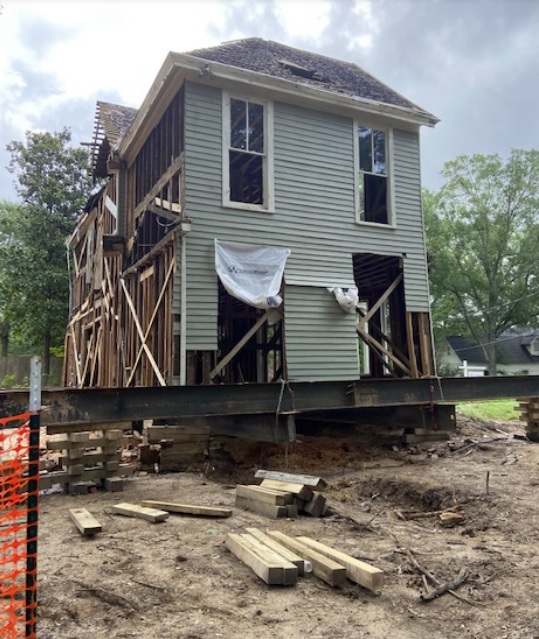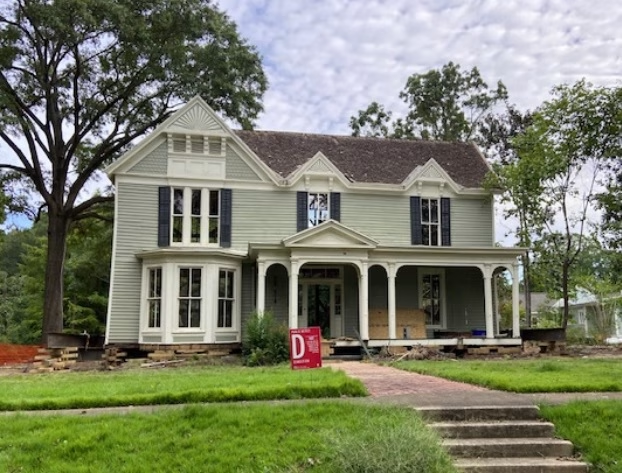
The Oxford Historic Preservation Commission told the owners of an 1890s home that it’s unlikely they’ll allow the house to be demolished but tabled the vote and gave them a chance to return next month with updated plans.
The house is located at 1009 Hayes Avenue and is owned by Michael Joe and Cheryl Cannon. On Monday, the Cannon’s and developer JW McCurdy presented their case for demolition of the older home to the HPC, claiming the house is too far gone to be saved. They want to tear down the home and rebuild it to look “exactly” like it does now.
According to a structural report provided by the owners, “The house would not be structurally sound for the duration, even with complete re-framing.”
McCurdy said that during renovations, the structural damage became more and more evident the deeper they looked inside the walls of the home.
“We pulled more off the walls, and we realized that this house has been piecemealed together for longer than I’ve been alive and not done well,” he told the commission. “At that point, I put the breaks on it and I called the city. The house is just unsafe.”
In the city’s Code of Ordinances, commissioners are required to consider certain criteria when considering any application for the demolition of a landmark or a resource within a preservation district:
- The commission shall consider the individual, architectural, cultural, and/or historical significance of the resource.
- The Commission shall consider the importance or contributing of the resource to the architectural character of the district.
- The Commission shall consider the importance or contribution of the resource to neighboring property values.
- The Commission shall consider the difficulty or impossibility to reproducing such a resource because of its texture, design, material, or detail.
“I have a hard time saying yeah take it down without giving it the old college try,” said Commissioner Joel Little. “This type of house is the reason I’m sitting on this commission – in order to save structures like this. It just breaks my heart. It’s happened too many times in this town. I understand the predicament you’re in with it. It’s not easy. It’s about as hard as it gets. I just think you gotta try.”
Planning staff told the HPC that they did not support the request for demolition on the home.
The staff report also stated they felt the structural report provided is a snapshot of the condition of the building after significant work has already been done and that some of the structural issues, in this case, appear to be self-created due to the work already carried out at the property.

“The demolition of this contributing resource is directly in conflict with the stated purpose of the historic preservation ordinance in effect, to, ‘protect, enhance and perpetuate resources that represent distinctive and significant elements of the city’s historical, cultural, social, economic, political, archaeological and architectural identity,’” stated the staff report represented at the meeting.
At one point, after hearing from the commissioners that they would not be in favor of demolishing the home, McCurdy asked the commission to go ahead and vote it down. If the commission voted to deny the demolition, the Cannons could appeal the decision to the Oxford Board of Aldermen.
The commission instead decided to continue the request and asked the Cannons to return with detailed plans of what would be built back after the demolition for their consideration. However, the commissioners strongly suggested they bring back a plan on how to save the house.
“I would really like to see you save the front of that house, and I think most of the commissioners feel that way, so don’t assume if your (redesign) plans come really close to replicating what’s there we’ll accept it,” said Commissioner Sarah Francis Hardy. “I think we’d be more apt to accept a plan that figures out a way to use what is there.”


